
Counter History: Nine Retellings and Reinventions of Noah's Ark
What is the Price of Being Saved During Ecological Catastrophe?
The story of Noah’s ark has, across the ages, inspired retelling and reinvention. Try to imagine what building an ark actually entails, and what decisions must go into it, and you might come to the realization, as we did, that the worst thing you can do is to imagine that you are no longer on an ark.
Noah’s Arkive re-examines the master myth for the narration of survival during climate change. Arguing against the routine, attenuated versions of the ark story we tend to repeat whenever we imagine a future of rising seas and drowned peoples, Noah’s Arkive uncovers a rich and millennia-long counter history in which Noah’s resignation to an ark of exclusion and limited preservation is questioned, rethought, rebuked, rebuilt. We offer a counter-archive of images, poems, novels, plays, songs, and building projects that salvage the possibility of capacious refuge from the ark. The writers, artists, composers, builders, and ark-reenactors we assemble are all careful readers and visualizers of the Genesis story, transforming its tropes and iconic scenes of landfall and rainbow into resources for refuge making.
Here is a suggested reading list for books about arks and the price of being saved during ecological catastrophe:
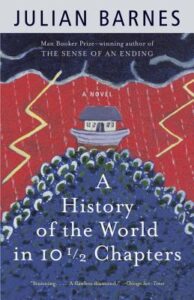
Julian Barnes, The History of the World in 10 1/2 Chapters
Julian Barnes offers an alternative archaeology of the Genesis account of Noah and the ark by way of stories about stowaways and their offspring, evangelical ark-seekers, and more, that intersect or glance off one another like strangers on a train. Barnes multiplies perspectives on the story of the Ark in a fractal retelling that takes readers on a tour from the beginning to the end of time. Highlights include talking woodworms and an astronaut who hears the call of the ark from the moon.
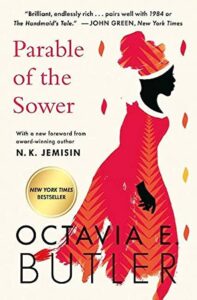
Octavia Butler, Parable of the Sower
Is there a more brilliant, strategic, and careful fragmenting of the story of Noah and the Ark than the Earthseed novels by Octavia Butler? Early in Parable of the Sower, Lauren Oya Olamina recalls a sermon on the story of Noah given by her father and interprets the sermon to mean that she has a lot of refuge-building work to do. Forced from the safety of her walled community, the indefatigable “hyper-empath” frames a new religion that grounds the afterlife in literal space travel. She builds a community of the found on the road North through California. As the series progresses, from the fully-realized Parable of the Sower and Parable of the Talents, elements of the ark story return in dispersed forms but now put to very different use.
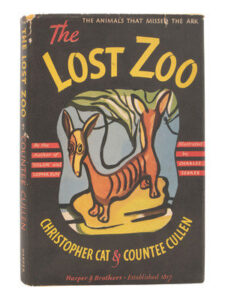
Countee Cullen, The Lost Zoo
The Lost Zoo is subtitled “a rhyme for the young but not the too young.” Cullen’s anthology of poems tells the story of his collaboration with Christopher, his cat, who offers tales of all the animals left off the ark. Offering a story of collaborative recovery of lost songs, Cullen’s poem builds something like a multispecies counter-ark of queer companionship. It might be an allegory of black authorship; of queer domesticity; a story about a writer and his cat; it might just be about all three.

Natalie Diaz, Postcolonial Love Poem
Postcolonial Love Poem by Natalie Diazcontains a masterpiece of a poem called “It Was the Animals.” From its opening line of “Today my brother brought over a piece of the ark / wrapped in a white plastic grocery bag” to its closing vision of flood, ruin, and familial care, the poem offers a meditation on the difficulties of history, refuge-making and saving those who will not be easily saved. The poem presents the Genesis story of the ark as a broken frame in need of repurposing, understanding that making a life raft of an ark is no easy labor and that love of this world is no easy commitment.
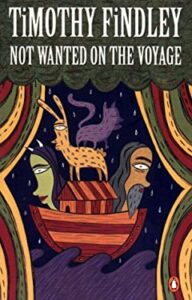
Timothy Findley, Not Wanted on the Voyage
Not Wanted on the Voyage is a thoroughly 1980s queer retelling of the ark story – as well as an allegory of survival against homophobia in a time of pandemic. “Everyone knows it wasn’t like that” is the first line of the novel as it begins staging a counter-story to the Genesis narration of Noah’s ark from the perspective of Mrs. Noah Noyes and her companion blind cat Mottyl. Not Wanted on the Voyage dwells with the left-behind, the unwanted, the lost. It teaches us that refuge forms in spite of the cruelty of the ark’s exclusive walls. It teaches us that instead of the severe endings that a rainbow promises we might be better off to “pray for rain.”
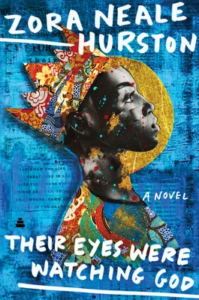
Zora Neal Hurston, Their Eyes Were Watching God
Their Eyes Were Watching God by Zora Neal Hurston is an account of deluge as observed at ground level, by a woman who was never invited into any ark of safety and yet found a way to create repeated refuge. The storm at its center drowns many and transports others to a resurfaced Jim Crow America where those with white skin enjoy the safety of bridges and those with black skin are forced to bury the undifferentiated dead. This is not a story of uplift, nor a story of trauma, but a narrative delivered by Janie on a comfortable porch to her friend Pheoby about making one’s way through a world where security never lasts long.
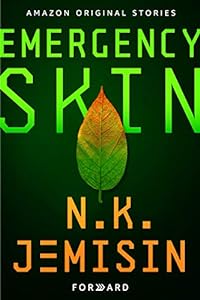
N. K. Jemisin, “Emergency Skin”
“Emergency Skin” by N. K. Jemisin is an elegantly efficient short story that undoes the entire narrative of Noah and the ark by imagining a world in which arks have become quaint. In the form of spaceships the arks left Earth long ago and transported with them the best of the humans – which is to say, the worst. Representatives must return periodically to what they imagine will be a deserted planet only to be surprised by how well we are all living and getting along. Come the story’s end, Earth exports a genre of emancipation and revolution into space. Jemisin’s story detonates the idea that everything outside the ark dies. Perhaps, instead, an ark that does not return removes from the world what most prevented it from thriving.
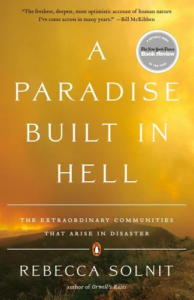
Rebecca Solnit, Paradise Built in Hell
Rebecca Solnit coins the phrase “disaster utopias” and shows us that what environmental upheaval reveals is that the true disaster was the preceding social arrangement. Solnit alerts us to the insufficiency of our accustomed ways of modeling disaster and the disastrous results of stories insufficient to the task. With its emphasis on hope, care and collaboration during times of challenge, Solnit provides an optimistic view of how communities react in a catastrophe’s wake.
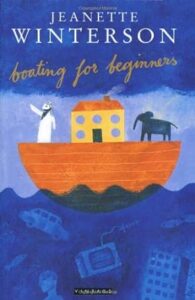
Jeanette Winterson, Boating for Beginners
Boating for Beginners is a thought experiment, imagining Genesis as rewritten by Mary Shelley reincarnated as a writer of comic cautionary tales. Noah runs a pleasure cruise on the Euphrates; ghostwrites God’s autobiography; plans a film version with the help of a rainbow-loving romance writer. But God decides to do the Flood for real and were it not for an orange demon and a quartet of young friends the screenplay for Noah’s film might have been forever lost. Hilarious and poignant, this book wrestles with what it means to survive the forces of patriarchal history.
__________________________
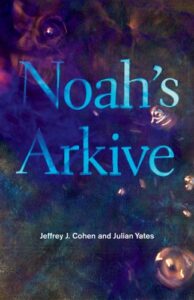
Noah’s Arkive by Jeffrey J. Cohen and Julian Yates is available now from University of Minnesota Press.
Jeffrey J. Cohen and Julian Yates
Jeffrey J. Cohen is Dean of Humanities at Arizona State University. He is author or editor of several books, including Stone: An Ecology of the Inhuman (winner of the René Wellek Prize of the ACLA) as well as Veer Ecology: A Companion for Environmental Thinking and Elemental Ecocriticism: Thinking with Earth, Air, Water, and Fire, all from University of Minnesota Press.
Julian Yates is H. Fletcher Brown Professor of English and Material Culture Studies at the University of Delaware. He is author or editor of several books, including Error, Misuse, Failure: Object Lessons from the English Renaissance (finalist for the MLA Best First Book Prize) and Of Sheep, Oranges, and Yeast: A Multispecies Impression (winner of the Michelle Kendrick Memorial Book Prize of the SLSA), both from University of Minnesota Press.



















